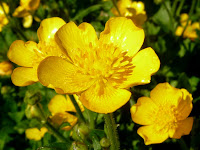/124766552-56af60c23df78cf772c3b5de.jpg)
Shewbird Mountain towers in the Southwestern corner of Clay County, NC. The name came after the shape of a flying bird. Others think the mountain was named for a Cherokee chief, Shewbird, who lived in a cabin on the ridge.
My father and his family lived at the foot of the mountain in the Matheson Cove. At one time, Great-Granddaddy Dallas Matheson owned the entire 600 acres of Shewbird Mountain and raised an apple orchard above the frost line.
Each spring the Ledford family hiked to the top of Shewbird Mountain and had a picnic. They could view both Georgia and North Carolina from the ridge line.
After their picnic on Shewbird, the girls would write notes to boyfriends and leave them between the boulders at the Devil's Post Office. That was a cave located on the mountainside.
My father and his brothers would hunt for ginseng in the woods. They never took all the plants from one spot, but some folks stripped the sane from the land until it became extinct.
The Cherokee Indians first owned this land. When they harvested plants, the Cherokee would apologize for taking them. They would always leave ginseng to grow back the next season.
Because the ginseng root resembled the human body, the mountain folks used it as a home remedy for all ailments that afflicted them. The bitter herb was more valuable than gold and exported to China. Besides using ginseng for medicinal purposes, many mountain folks supplemented their income by harvesting this plant.
by: Brenda Kay Ledford
This story appeared in Old Things, an anthology published by Old Mountain Press, 2018,
www.OldMountainPress.com.








